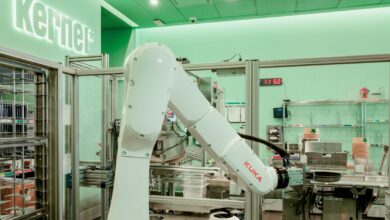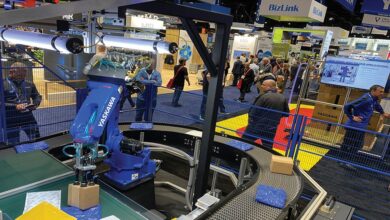Flexiv Robotics improves sanding efficiency for shutter company, sorts recyclables
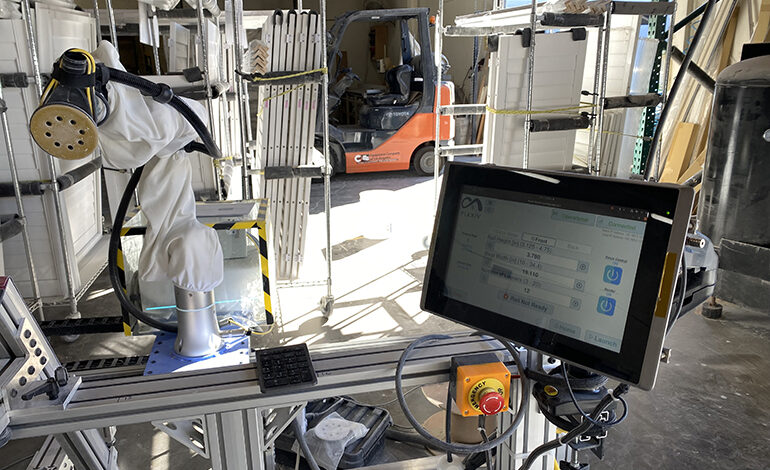
Custom user interface for Flexiv Rizon 4 sanding robot. Source: Flexiv Robotics
By integrating sensing, robotics, and artificial intelligence, Flexiv Robotics Inc. claimed that it can improve multiple industrial processes, from sanding to sortation. It develops and manufactures general-purpose, adaptive robots.
Founded in 2016, Flexiv produces the Rizon arm with seven degrees of freedom and the Moonlight force-controlled parallel robot. The Santa Clara, Calif.-based company has offices in China, Taiwan, and Singapore.
Last month, Red Bluff, Calif.-based systems integrator DOCO Engineering partnered with Flexiv to further expand its presence in North America. More recently, Flexiv shared a case study and Earth Day initiatives.
Flexiv Robotics recently helped Rosemead, Calif.-based EsVata Shutter automate sanding of window blinds. The company said its adaptive technology sped up the sanding process by 80% and increased the quality and consistency of surface finishing.
“Our commitment to quality led us to select the Rizon 4 from a sea of competitors,” stated Paul Hsieh, founder of EsVata. “Its exceptional precision, powered by advanced force sensors in each of its seven joints, made it the ideal solution for our sanding needs.”
Flexiv said it combined its robotic arm and sensing technology with an OnRobot Sander to free employees for more value-added tasks.
Howard Huang, operations director for North America at Flexiv, replied to the following questions from The Robot Report:
What was required to integrate Flexiv and EsVata’s systems?
Huang: The integration of Flexiv’s Rizon 4 sanding solution within EsVata’s production facility required a customized approach due to EsVata’s lack of a PLC [programmable logic controller] or an existing automated production environment.
Understanding that EsVata is a smaller manufacturer that values modularity and customizability, we implemented a standalone system to boost EsVata’s production capabilities that didn’t necessitate a comprehensive revamp or modification of their current infrastructure, enabling a smooth, trouble-free integration.
How long did it take to set up?
Huang: Integrating Flexiv’s technology into EsVata’s manufacturing operations was achieved in a relatively brief period. The initial setup, which included the installation, configuration, and calibration of the robotic system, was completed in about three days.
This quick deployment reflects the system’s inherent useability and ease of programming, as well as the effective collaboration between Flexiv’s and EsVata’s technical teams. With the installation completed over a long weekend, starting on the Saturday, production was able to resume on Tuesday.
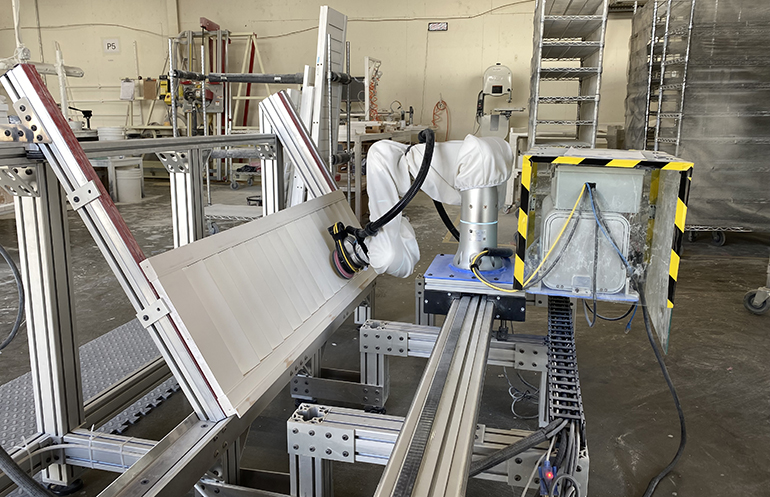
Rizon has automated shutter sanding at EsVata. Source: Flexiv Robotics
System reduces staff effort, production time
What do the people who previously did this sanding do now? Do they supervise the robots, or what other tasks can they do?
Huang: With the sanding solution incorporated into the production line, some staff members have transitioned into supervisory roles to monitor the automated processes or have been assigned to specialized sanding tasks that require a human touch, such as fine corner sanding, which the robot is not programmed to handle.
This redistribution of labor has safeguarded jobs by increasing production efficiency and improved job satisfaction by reducing the physical strain and the monotony associated with manual sanding tasks.
How long did it take for EsVata to realize the time savings on the shutter sanding?
Huang: EsVata recognized the time savings immediately, as the efficiency gains were apparent from the onset of the system’s initiation. With the massive reduction in the time taken to sand a shutter, it was clear that our sanding solution could not only replicate the human sanding process, but also do it far quicker and to a higher standard.
To get consistency of output with manual labor requires a time investment, whereas for a robot, replicating a precise set of actions to achieve a predetermined outcome is simple. As the robot never tires or makes a mistake, it was obvious that the automated system would be faster, but both EsVata and ourselves were surprised at the 80% time decrease.
What are the next steps in this deployment?
Huang: While the current project is complete, EsVata is contemplating installing further adaptive automation solutions within its factory to boost production capacity. This decision is being carefully considered, taking into account a return-on-investment [ROI] analysis, prevailing market conditions, and EsVata’s strategic expansion goals.
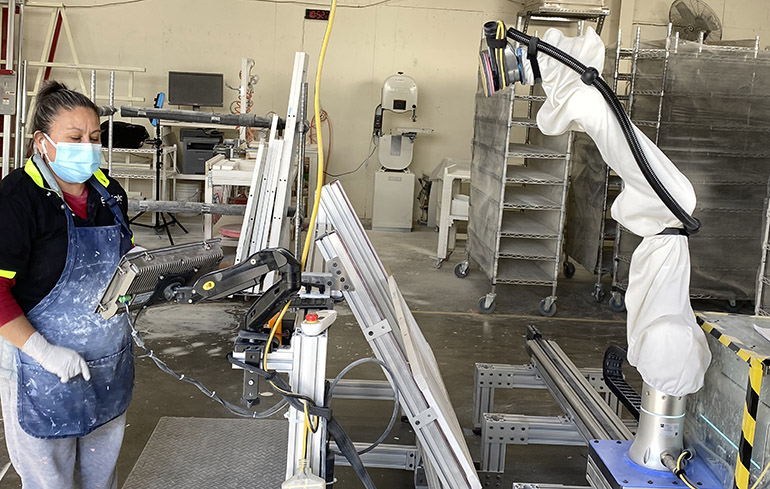
An EnVata worker supervises the Rizon sanding robot. Source: Flexiv Robotics
Flexiv Robotics gripper, cleaning station to aid recycling
Last week, Flexiv Robotics said it has modified the Grav Enhanced robotic gripper to be cleaned in its Grav Enhanced Automated Cleaning Station. The company said this helps the gripper retain its effectiveness in picking up objects weighing up to 5 kg (11 lb.) and those covered with dust.
For Earth Day today, Flexiv showed off a combination of its Grave Enhanced Gecko Gripper, a Rizon 4 adaptive robot, a 3D depth camera, and its AnyGrasp algorithm to identify and sort household waste for recycling (see video below). The company added that the new cleaning station has helped expand its product capabilities.

